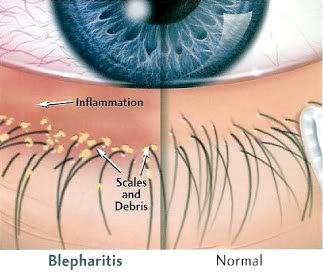Dry Eyes
Dry eyes, often referred to as “Dry Eye Syndrome”, is a very common complaint. About 15% of the population, in all ethnic groups, experience varying degrees of Dry Eye Syndrome.
Like most eye conditions, Dry Eye Syndrome is often related to health conditions elsewhere in the body. It is commonly associated with dryness of other mucous membranes and interior body surfaces, such as joints and brittle nails. 0
It can also be a sign of digestive imbalances, or of more serious systemic autoimmune diseases, such as Rheumatoid Arthritis, Sjogrens Syndrome or Lupus Erthematosus.
The proper production of tears basically takes place at three layers:
- The Mucus Layer – the closest layer to the corneal epithelium. This is produced by the conjunctival goblet cells, and is absorbed by the corneal surface glycoproteins, creating a hydrophilic corneal surface.
- The Aqueous Layer – between the Mucous and Lipid layers. This comprises of 90% tear film. It is secreted by the lacrimal gland and incorporates all water-soluble components of the tear film (slightly alkaline at pH of 7.4).
- The Lipid Layer – the most superficial layer. The Meibomiam glands produce it with minor contribution from other glands. The secretion is a sebaceous fluid at body temperature, and stops evaporation of the aqueous layer, thereby allowing tear film to mould itself to the eye’s surface.
- The Blink – renews the tear film by delivering aqueous and lipid to tear film and sweeping away debris. The normal blink interval is every 5 seconds. Tear film is typically stable for about 10 seconds
Symptoms
The typical symptoms include dryness, grittiness, irritation, difficulty reading for long periods of time, burning and even the seeming contradiction of excessive tearing or watering.
Blepharitis
Blepharitis is an inflammation of the rims of the eyelids, which causes them to become red and swollen. It is very common, accounting for an estimated 1 in 20 eye problems reported to GPs.
Blepharitis is more common in people over 50, although it can develop at any age.
The symptoms of Blepharitis can include:
- Burning, soreness or stinging in the eyes
- Crusty eyelashes
- Itchy eyelids
Blepharitis can be caused by a bacterial infection, or it can be a complication of a skin condition such as:
- Seborrhoeic dermatitis, which causes an itchy rash on the skin and scalp (seborrhoeic dermatitis of the scalp is called dandruff)
- Rosacea, which causes the face to appear red and blotchy
It is not possible to catch Blepharitis from someone else who has it.
Holistic treatment options start by identifying the potential cause, as this can be very individual.
The most common causes are dehydration, hormonal imbalances, allergies, autoimmune conditions, acute/chrinic infections, prescription medication side effects, and environmental exposure.
Natural eye drops may help in the short term, but will only act as a bit of a ‘sticking plaster’! It is the underlying cause that needs correcting.
Once an underlying cause is identified, or at least suspected, HealthPoint acupressure can do its job efficiently, treating stimulation points relating to those causes. HealthPoint has been found to be extremely effective anecdotally and scientifically for many types of eye problems and their symptoms, often with fast relief. Of course it is equally important to ensure dietary improvement.




Recent Comments